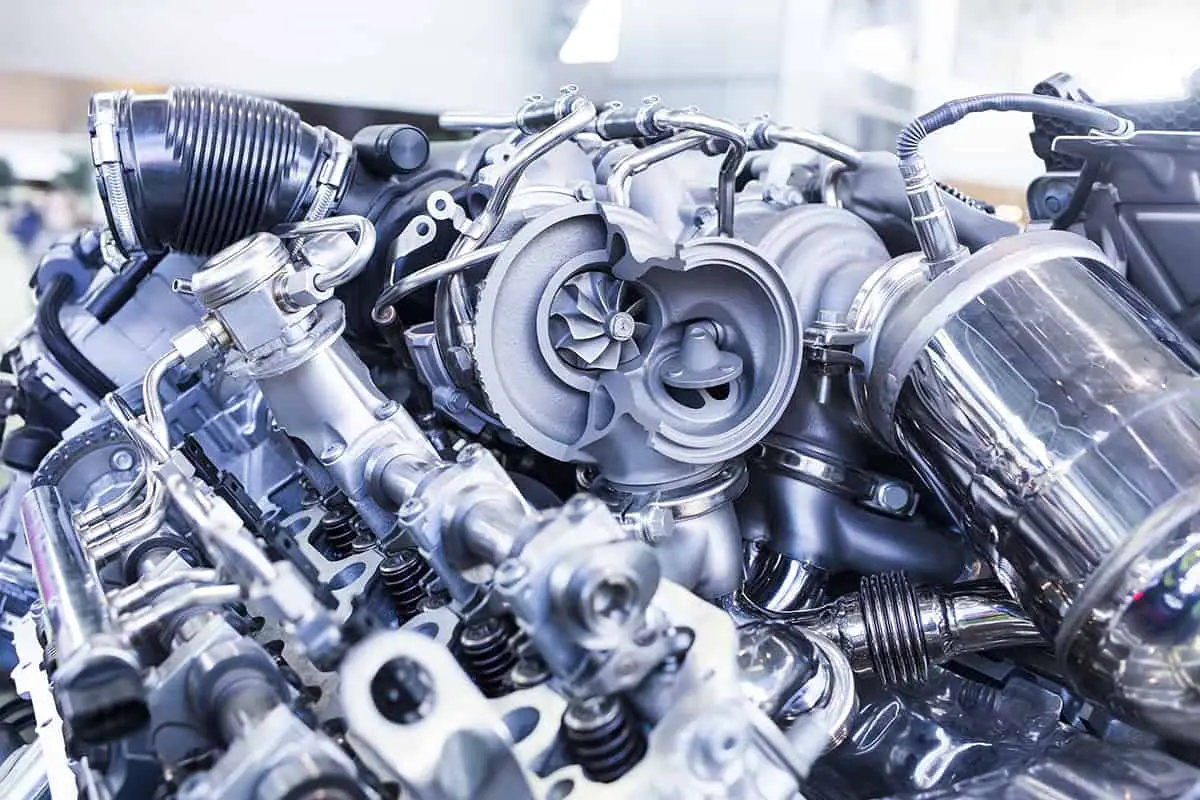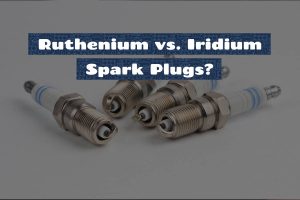The Duramax engine, produced by General Motors, is widely regarded as one of the best diesel engines available. Its durability, reliability, and power have made it a popular choice among truck owners. However, some model years of the Duramax have performed better than others.
Here is a list of the best Duramax year models:
- 2010-2017 Duramax LGH
- 2017-2021 Duramax L5P
- 2019-021 Duramax LM2
- 2014-2021 Duramax LWN
And here are the Duramax year models to avoid:
- 2001-2004 Duramax LB7
- 2004-2005 Duramax LLY:
- 2006-2007 Duramax LBZ
- 2007-2012 Duramax LMM
- 2011-2016 Duramax LML
In this guide, I’ll explain in greater detail what each of these Duramax engine year models has to offer. That way, you’ll have a good idea whether to purchase a used Duramax engine from a specific year.
What Are the Best Years for the Duramax?
1. 2010-2017 Duramax LGH
The Duramax LGH engine (2010-2017) is a 6.6-liter turbo diesel engine that boasts impressive durability, power, and fuel efficiency. The use of advanced casting techniques and a sturdy cast iron base ensure that it will last for years to come.
The engine also features a die-cast aluminum crankcase and direct fuel injection into the common rails, which allows for more accurate fuel metering and a smoother idle. You will also find that it utilizes a variable-vane turbocharger, resulting in more power and reduced emissions.
The LGH also features a high-capacity Selective Catalytic Reduction (SCR) system, a Cooled Exhaust Gas Recirculation (EGR), a Diesel Particulate Filter (DPF), and an intake throttle. These features make the Duramax LGH an excellent choice for those seeking a powerful, fuel-efficient, and reliable engine.
2. 2017-2021 Duramax L5P
The 2017-2021 Duramax L5P is an exceptional diesel engine that joined the Chevrolet Silverado HD and GMC Sierra HD trucks. Despite having a similar appearance to the previous LML Duramax, the L5P engine is completely different and offers better performance, towing capability, and reliability.
The L5P Duramax utilizes a 90-degree V-8 configuration with a cast-iron block, induction-hardened cylinder walls, and five nodular main bearings, making it more durable and stronger. The engine also features a deep-skirt design with four-bolt, cross-belted main caps for improved accuracy in the rotating assembly.
The new L5P Duramax is the most powerful Duramax engine to date, producing 445 horsepower and 910 lb.-ft. of torque. The engine’s improved performance is due to numerous changes including a BorgWarner Variable Geometry Turbocharger, a fuel system overhaul, and a functional hood scoop intake system.
3. 2019-021 Duramax LM2
The Duramax LM2 is a 3.0-liter, six-cylinder turbodiesel engine that delivers impressive performance. With a maximum torque of 460 lbs.-ft. and a maximum output of 277 horsepower, the LM2 provides more than enough power for most drivers. Additionally, the LM2’s 26 miles per gallon (MPG) combined fuel economy rating is the best among all diesel engines currently on the market, and some Silverado trucks have been known to achieve up to 40 MPG. The LM2 engine is also capable of towing up to 9,000 pounds.
The LM2 is designed to be highly responsive, giving drivers a great deal of speed and power. It features an air induction system, a cold weather superstar system, a 10L80 10-speed automatic transmission, a Holset Variable Geometry Turbocharger, and an improved oiling system. Although the LM2 is only available in newer trucks, it is well worth seeking out.
4. 2014-2021 Duramax LWN
The Duramax LWN is a 2.8-liter diesel engine that is known for its optimal power and efficiency. It features a variable-geometry turbocharger that helps to provide smooth horsepower on demand, as well as a balance shaft for improved smoothness. The engine has been certified by the SAE to produce 181 horsepower and 369 pound-feet of torque.
In addition to its impressive power, the LWN is also known for being one of the cleanest diesel truck engines produced by General Motors. It complies with some of the strictest emission standards in the US due to its cooled exhaust gas recirculation system.
The engine also has a broad torque band that allows for strong performance at low RPMs, which is ideal for towing and regular driving. The turbocharged power delivery is smooth and responsive, which provides drivers with confidence on the road.
What Are the Worst Years for the Duramax?
1. 2001-2004 Duramax LB7
The Duramax LB7 was the first generation of the V8 Duramax engine, and it was powerful and reliable. Despite its strength, it had a number of issues, the most significant being injector failure after traveling around 100k miles. This problem caused the original owners to replace the injectors, and it’s important to double-check if the 200k-mile warranty still applies if the injectors have been changed.
The LB7 is an old engine, but it’s still strong and dependable. It is also likely the least expensive Duramax engine due to its age. However, the lower price may also be a result of its notorious injector problems. These issues can be costly to repair, and even with an injector replacement, a good-condition LB7 is expected to cost upwards of $25,000.
While the LB7 is considered the best budget Duramax engine, the LLY is also a reliable option, although it may end up having more problems with overheating. Ultimately, the LB7 may not be the best choice due to its injector issues, which can result in expensive repairs.
2. 2004-2005 Duramax LLY
The Duramax LLY was a short-lived second-generation engine produced by the company. It was similar to the LB7 engine, with no upgrades and no emissions control features. Despite resolving the injector issues present in the LB7, the LLY faced overheating problems while under heavy loads or in hot weather.
The cause of this overheating is believed to be inadequate air intake, resulting from poor construction and a narrow cross-section that didn’t allow enough air to enter the engine. Before purchasing this engine, it’s important to ensure that an aftermarket air intake has been added to address this overheating issue.
3. 2006-2007 Duramax LBZ
The Duramax LBZ engine was introduced as the successor to the LLY Duramax in 2006. However, its production run was short-lived, lasting only for two years until 2007, due to new emission regulations. The LBZ shared some similarities with the LLY but also had several key differences, including a thicker engine block and higher fuel injection pressure.
However, despite these changes, the LBZ did not incorporate modern emission control systems, which had a negative impact on its lifespan. Another issue with the LBZ is that its pistons are prone to cracking when the output exceeds 600 horsepower. This is not a concern for those who plan to use the stock engine, but those who intend to modify the engine may experience this problem.
Keep in mind, though, that to reach such a high output level of 600 horsepower, one would need to spend a significant amount of money on engine modifications, making this issue less common.
4. 2007-2012 Duramax LMM
The Duramax LMM, which was introduced after the success of the LBZ, was expected to be an improvement. However, there were some structural problems that posed a risk for those who wanted to tune the engine. Unlike the LBZ, the LMM had six fuel-spray holes instead of seven, which led to two streams of fuel pouring out in opposite directions over the wrist pin of the piston, causing cracks at its weakest points.
Due to the additional emissions control components, including the introduction of the Diesel Particulate Filter (DPF), many diesel engine enthusiasts have lost interest in this model. It features a 6-speed Allison transmission and has the same compression ratio as the LBZ. The engine is a V-8 with a cast iron block and aluminum head, and it produces 365 horsepower at 3,200 RPM and 660 lbs.-ft. of torque at 1,600 RPM.
Despite new engine control software and increased-capacity cooling systems, the LMM Duramax has experienced several major issues, including piston and crankshaft failure, transmission line leaks, fuel system problems, regeneration of the Diesel Particulate Filter, and blocked DPF systems. The LMM in vans produces 250 horsepower at 3,200 RPM and 460 lb-ft of torque at 1,600 RPM.
5 .2011-2016 Duramax LML
The Duramax LML was a high-performance engine that was built to deliver great results. Despite the manufacturers’ efforts, the LML suffered from some defects in its fuel system, particularly with its fuel injection pump, which made it highly prone to failure. This could result in the dispersion of fragments throughout the engine, requiring multiple repairs to the fuel system and cleaning of the tank.
The main reason behind this was the need to reduce emissions while still delivering more power, which led to the increase in fuel pressure and the eventual failure of the fuel pump. However, the LML wasn’t well-received by the public due to its performance issues.
One of the problems with this engine was weak tie rods, which could lead to steering system problems and make driving the truck difficult. The ball joints and upper control arms were also known to fail prematurely due to the increased stress they faced over time, causing alignment and suspension problems.







